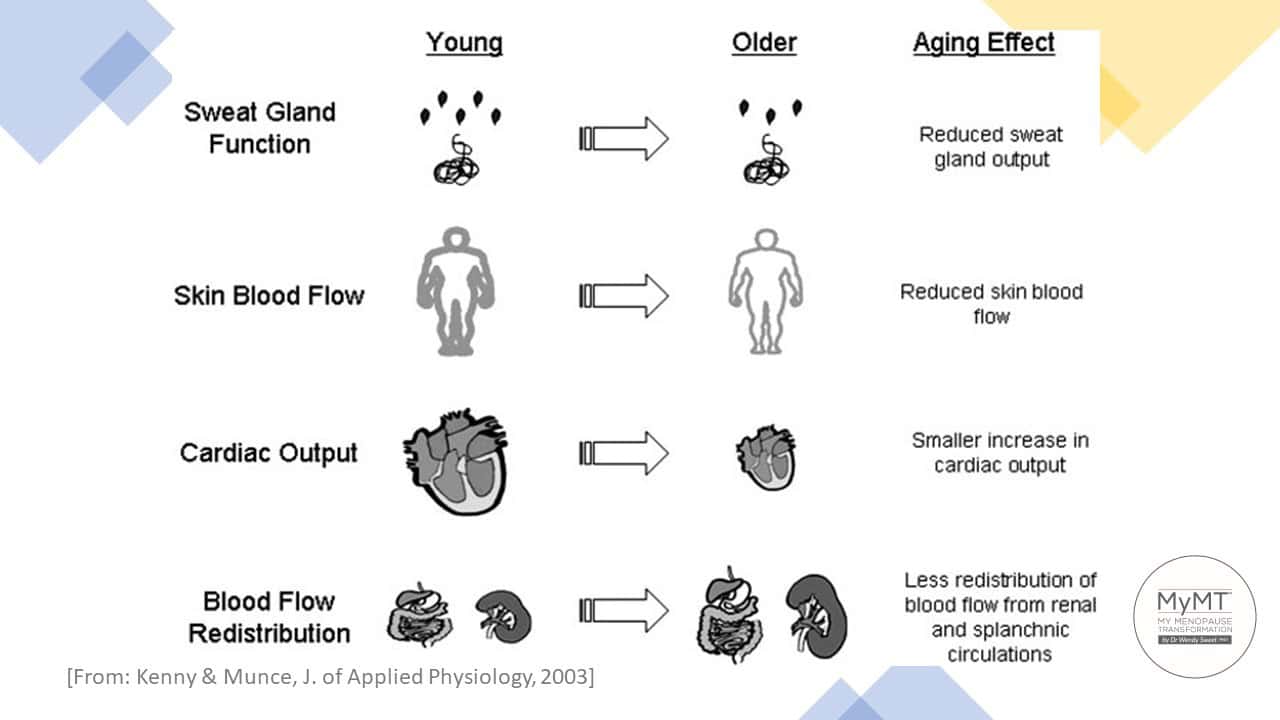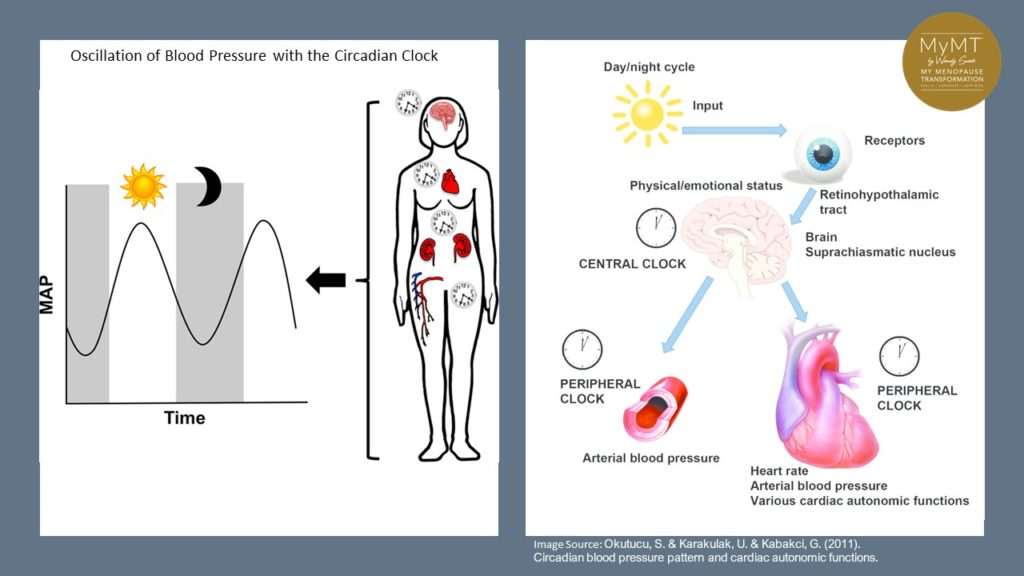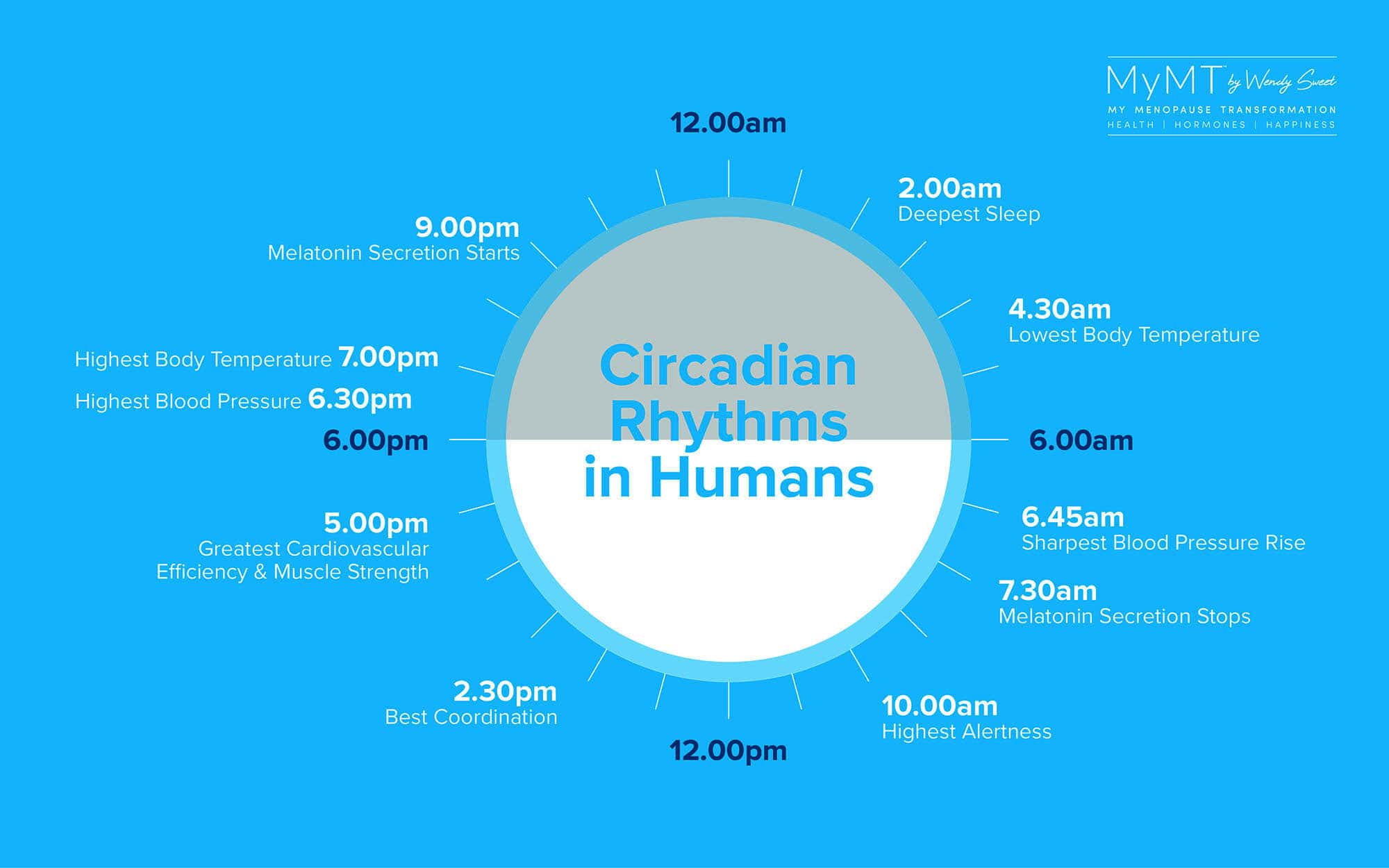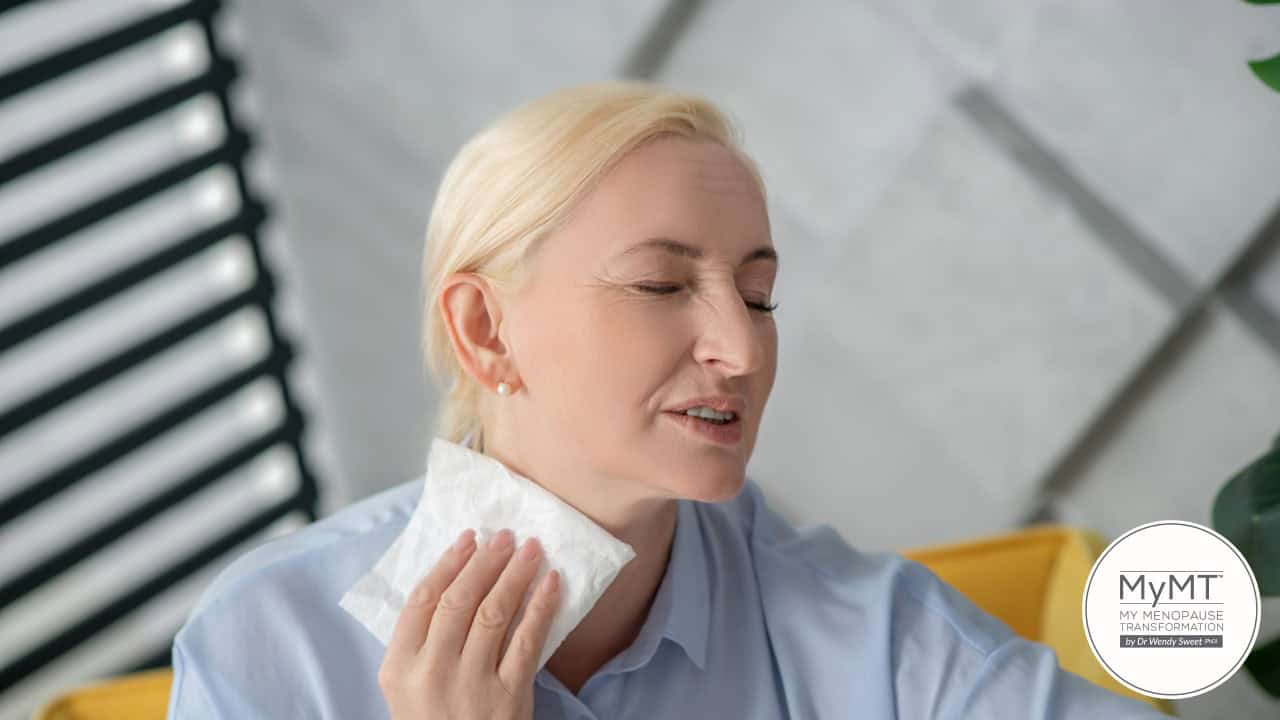Whilst the South Island of New Zealand has just experienced the first Polar blast for the winter, the weather-man on the BBC tells me that those of you on the opposite side of the world are going to experience your first heat-wave of the summer … and it’s only June.
We’re all being told that climate change is a critical concern throughout the world, but it’s particularly tough for those of you still struggling with hot flushes and night sweats. Those of you in the northern parts of Australia will also relate to this I know.
Hot flushes, night sweats and menopause insomnia are all related physiological events and when the heat is turned up outside, it can be tough for women in their menopause transition. You see, when it comes to the regulation of our body temperature in middle-age, and how we respond to environmental heat and heat loss from our body, women differ from men.
We also differ when it comes to how quickly we cool down during and after exercise, so you ladies who are exercising outdoors over summer, please take note. Get up early and avoid the heat of the day.
I bet that many of you, like me, never gave your heat regulation a thought prior to menopause. But the skin – our largest organ – is replete with oestrogen receptors. Not only does this mean that these receptors struggle to find oestrogen to attach to them during our menopause transition, but because our skin is also replete with sweat glands, there are changes to these as well. Which is why, when it comes to regulation of heat in menopause, we can’t compare ourselves to males. This is an important point to note, if your male Personal Trainer or Exercise Coach is trying to make you work harder!
Women have a greater subcutaneous fat content compared to males and fat isn’t a wonderful conductor of heat, hence if we put on weight during menopause, not only do our hot flushes increase but our exercise capacity lowers as well. As I always tell women, this is why many of you can’t lose weight with exercise the way you used to, before menopause arrived.
When it comes to heat regulation in the female body though, it isn’t always about our sweat glands. There are other factors going on too. In fact, there is a curious connection between your circadian rhythm, body heat and hot flushes.

When I first began to have hot flushes and high blood pressure as I moved into my early 50s, nobody mentioned my lack of sleep or circadian rhythm. The aches and pains arrived not long afterwards as did my feelings of fatigue.
The increased body-heat I felt around 6pm when I was cooking dinner, supervising kids homework and multi-tasking a host of other home activities was energy-zapping too. But these days I know better and understand why those endless expensive supplements and HRT weren’t helping to reduce my body temperature either. Not sleeping was messing up my circadian rhythm.
This in turn, was messing with my body’s temperature regulation. I was sweating and feeling hotter as my body tried to cool down. Reading new research this week, about how scientists have linked circadian rhythm and body temperature variations to the function of our immune system, I’m not surprised that they have called this connection ‘a tangled threesome’. [Coiffard, Diallo et al, 2021].
‘In mammals, including humans, the body temperature displays a strict circadian rhythm and has to be maintained within a narrow range to allow optimal physiological functions. There is nowadays growing evidence on the role of the temperature circadian rhythm on the expression of the molecular clock. The Circadian Rhythm Body Temperature (CRBT) participates in the phase coordination of circadian timekeepers in peripheral tissues, thus guaranteeing the proper functioning of the immune system’. [Coiffard, Diallo et al, 2021]

Your circadian rhythm (the regulation of your body’s 24 hour clock) strongly influences your human biology and disease states.
Almost all of the functions of the human body show circadian pattern that is under control of a biological clock. From our blood pressure to our immune health, to our temperature control, to liver health and gut function, our circadian clock matters.
Menopause hormonal changes mess it up. And if you are back travelling and doing long haul flights, remember that working in different time zones, messes up your circadian rhythm as does shift work. It’s why, if your HRT isn’t working any more, nor are your various supplements to help your hot flushes, especially if you are in post-menopause, then you might want to have a little focus on restoring your circadian rhythm. Yes, in menopause and beyond, it’s that important for your health and your weight management too.

Every major organ in your body works to your circadian night/day cycle.
This includes your blood vessels and blood pressure as well. Circadian type blood pressure rhythm refers to the daily variation of BP that is generally higher during the day than at night – it’s especially high in the early evening hours when you are getting home from work, or doing all the jobs that you need to get done.
It’s no wonder you are feeling hot and bothered – even in winter. Between 6pm – 9pm is when your blood pressure is high and your body temperature at its highest as well. What I do with the ladies on my programmes are to suggest new evening routines and foods which are evidenced to help to lower their blood pressure, especially after a busy, stressful day at work.
Physiological body temperature is approximately 37˚C in healthy humans with approximately, a 1˚ variation within the circadian cycle. If you want to manage your hot flushes in menopause and you want to reduce your blood pressure and improve your immune health, then you need to sort out your circadian cycle as much as you can. It’s why the very first module I have in the MyMT™ programmes is simply called ‘Sleep All Night’ – it’s that important to your hot flushes and blood pressure management. It’s why, some of you find that despite the Menopause HRT and endless supplements, your hot flushes remain with you right into your post-menopause years.

There are numerous factors that disrupt your circadian rhythm during menopause, including:
- The type, timing and amount of food you eat. Women on my programmes know that high protein diets increase heat production in the body. Protein has the highest thermo-genic (heat generating) effect. Many daily protein calculations are derived from sports nutrition studies, so I change this calculation to reflect women’s health and ageing research. Furthermore, our body needs glucose from starch carbohydrates and metabolism of this is better in the morning. Numerous women get off all carbohydrates and go on high-fat Keto diets, but there are certain carbohydrates that we need for our cardiac health and circadian cycle.
- The level of inflammation in your body going into menopause (those of you doing lots of exercise, please take note!).
- How efficiently you can dissipate (remove) the heat from your skin as sweat. This emerges as a problem in women during menopause, as skin (our largest organ), changes in response to the decline in oestrogen.
- Whether you are a shift-worker. Night workers display significant circadian rhythm abnormalities, including disruption of the body temperature. I have lots of shift workers on my programmes and I work with them to put in place strategies that help them prepare for sleeping in the day.
- Whether you work late into the night and go to bed late.
- The amount of physical exercise or activity you are doing as well as how aerobically fit you are. One of the things I discuss in the Rebuild My Fitness programme is that how quickly your heart rate returns to normal after exercise is now seen as an important marker, not only as a measurement of aerobic fitness, but also as a biomarker of the circadian management of blood pressure. [Okutucu et al., 2011].

The regulation of your body temperature is synchronized by your body clock and this is regulated by light reaching your tiny pineal gland every morning. This is why our brain needs to register a contrast between day and night – to ensure that our body experiences a reproducible rhythm in behaviour, waking in the morning and sleeping in the evening.
This helps our brain to ‘rest’ and ‘wake’ which in turn helps to regulate the function of other circadian clocks on many peripheral tissues, such as the liver, heart, arteries, skin and lymphocytes. For women going into menopause and beyond, this is crucial to know, because every one of these regions in the body are declining in oestrogen and as such, our menopause transition affects the function of other organs in our body. Hence, as women on my 12 week coaching programmes discover, if we sort out our circadian rhythm changes during menopause, then we sort out many of our other symptoms too.
I talk about this in my online Masterclass on Menopause and give you some solutions in this wonderful educational module for you as well. Have a listen to the video below when you can as I explain what’s in my 2 hr Masterclass – and yes, because I’ve pre-recorded it, you can ‘pause’ me anytime you like as well.
Can I help you with your symptoms?
If you are struggling with your mid-life weight, health or symptoms, then come on board if you can into my 12 week online programs. MyMT™ programs are normally available for NZ$299 each, but please do check out the MyMT website or subscribe to our newsletter to be alerted to any promotional offers.
Or as a starting point, you can purchase my online Masterclass on Menopause. This is only NZ$15 (approx. AUS$14 or UK£7.50). I hope you can join me in this powerful 2 hour webinar. The great news is that now you can watch it anytime, anywhere and even pause it whenever you like and go and make yourself a cuppa too.
References:
Coiffard, B., Diallo, A. B., Mezouar, S., Leone, M., & Mege, J. L. (2021). A Tangled Threesome: Circadian Rhythm, Body Temperature Variations, and the Immune System. Biology, 10(1), 65. https://doi.org/10.3390/biology10010065
Kaciuba-Uscilko, H., Grucza, R. (2001). Gender differences in thermoregulation. Current Opinion in Clinical Nutrition and Metabolic Care, 4(6), 533-536
Jehan, S., Giardin, J-L, Auguste, E., et al (2017). Sleep, Melatonin and the Menopausal Transition: What are the links? Sleep Science, 10(1): 11-18.
Molnar, G. (1975). Body temperatures during menopausal hot flashes. J. of Applied Physiology, 38.3.499
Okutucu, S. & Karakulak, U. & Kabakci, G. (2011). Circadian blood pressure pattern and cardiac autonomic functions: Different aspects of same pathophysiology. The Anatolian Journal of Cardiology. 11. 168-73. 10.5152/akd.2011.031.
Reinke H. & Asher G. (2017). Circadian clock control of liver metabolic functions. Gastroenterology, 150: 574–580.
Rizzi, M. et al. (2016). Sleep Disorders in Fibromyalgia Syndrome. Journal of Pain Relief, 5:2, 1-5
Sharma, S. & Kavuru, M. (2010). Sleep and Metabolism: An Overview. Int. Journal of Endocrinology, Article ID 270832, 1-12.

